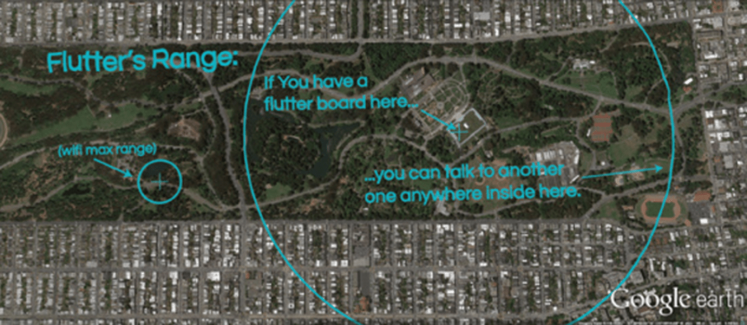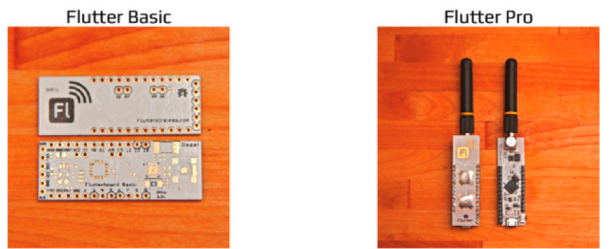ARM-powered Wireless Platform Opens Doors for IoT

A talented Maker by the name of Taylor Alexander, co-founder of Flutter Wireless, an ARM-powered wireless platform, has recently gained a large amount of support for the company’s innovative wireless electronics development platform based on Arduino. No novice to DIY, Taylor has spent a life of hacking, making and transfiguring things to have them do all sorts of different actions than these electronics were originally made to do.
At the early age of five, he would break things down and rebuild them to create something entirely different — taking parts from old cameras, stereos and other electronic components, then transforming them into electric cars. From early on, it was evident Taylor was an innovator in the ‘making.’
The powers of the Maker Movement — a fabulous combination of getting the media, bloggers and influencers onboard, riding pre-existing trends, thinking outside the box, conducting frequent demonstrations, all while responding to the ideas and wants of the community. Arguably the most important aspect of the DIY revolution is the validation and acceptance of the community wanting to endorse and witness an idea come to fruition.
At an individual level, it’s an exciting and opportunistic time for an inventor or anyone looking to contribute to the landscape of technology or where it is going.
Introducing Flutter Wireless, Hardware for Connecting the Internet of Things
These are some of the most compelling reasons as to why Flutter Wireless is able to prove innovative ground, validate their product ideas and infuse the necessary capital to promote more success across communities. As in its Kickstarter’s illustration, the wireless electronics development platform can be communicated from of a large 3,200 ft (1km) usable range. It is packaged with a powerful Atmel ARM-based SAM3S processor, coupled with integrated encryption using Atmel’s ATSHA204 cryptographic chip as the device to secure it’s system.
So, how does this wireless platform work? Well, as the Flutter Wireless site explains:
“Creating Flutter networks are easy, even if it’s just two boards. Specify networks in Arduino code or configure Flutter with our mobile app. Once configured, devices can enter and exit the network seamlessly. This makes it extremely easy to set up a network at home (or anywhere else) where all of your projects can reliably communicate. Flutter is like a second network for your devices.”
In fact, in the landscape of connecting devices and the Internet of Things, an individual building out of a wireless project shouldn’t have to be too expensive. “Flutter was built from the ground up with cost in mind, that’s why our boards start at just $20. We’ve worked hard to keep costs as low as possible and deliver you a quality product you can afford to use in as many projects as you’d like,” explains Taylor.
Taylor has helped further the ecosystem development by leveraging the concepts of “shields” and designing a handful of various protocol shields for Flutter. It’s really focused on individuals who want to get started quickly and build heterogeneous nodes of connected devices on a network.
The Flutter boards come shipped with breakout boards and socket headers, combined with the power of connectivity to various protocols (Bluetooth 4.0 Low Energy or conventional Bluetooth 2.1). The Flutter Wireless platform is comprised of the network shield which connects to your home router, creating a bridge between mobile devices (M2M) the Internet and Flutter. For a wireless system, the important factors are range and reliability.
 According to Flutter Wireless Kickstarter:
According to Flutter Wireless Kickstarter:
“We use WiFi everyday, but take a few steps down the driveway and coverage quickly becomes scarce. Flutter is a different kind of wireless system, completely self-contained with over a half-mile range. This allows for a wireless platform without borders, and no longer being chained to a router means your projects are free to follow you out the front door, through the yard, and down the street.”
As previously discussed in Bits & Pieces, the combined Flutter Wireless Development platform is quite comprehensive, considering it’s Kickstarter and crowdfunding origins. Flutter Wireless comes packaged with Atmel’s ATSHA204 to ensure maximum secure storage and protection of encryption keys. Flutter is designed to address security and wireless in a combined package. The platform is comprised of a design, which encompasses a special cryptographic hardware (Atmel’s ATSHA204) that integrates cryptography into every communication layer of the software. In essence, this gives the user ultimate control over who can and cannot communicate with their devices.
The project is given strengths by making it accessible via the Open Source community – ensuring the possibility of enhancing the roadmap by contribution to improve upon Flutter Wireless foundation though the power of the community. Furthermore, Flutter’s wireless concept seamlessly routes messages across a varied number of connected devices to reach their destination. It’s sort of like a lily pad of daisy chaining across many nodes or protocols.
With that said, there is a world of potential in the IoT buildup for a number of reasons. Arduino already has a big open-source following. First, this is already proven (via the Maker Movement and Maker Faire) and it’s one of the easiest ways to bridge the physical and digital worlds together. Flutter Wireless can be a node in a larger mesh network, which could be useful for large public projects. (i.e. let’s say a hobbyist or passionate drone user wants to fly his drone to the next town over, keep it connected across RC and mesh networks all within good range and security).

The winning formula:
ARM + Encryption + Easy Development + New IoT-Based Radio + Mesh + Shields + Open Source + Community + Crowdfunding = Thousands of lines of agile code, mesh support, tagging, and various protocol features required to support IoT buildup potential applications for Flutter Wireless include:
- Quadcopters
- Landscape sensors
- Agriculture remote sensor installations
- Remote security implementations
- Crowdsourcing spectrum analyzers
- RC hobbyists
Flutter still finds itself under development and continually evolving. The prototypes were designed with the Sparkfun Arduino Pro Mini for rapid development and proof of concept. Out of this ideated adventure, a new generation of boards are in the process being developed with Atmel SMART™ ARM-based SAM3S, a very affordable, versatile and powerful ARM core processor with a capacity for speed and storage space to suit any designer’s connected device project.
- Atmel SMART™ SAM3S Cortex™ M3 Flash MCU (ARM based processor at 64MHz)
- Cryptographic key storage using Atmel’s SHA204 CryptoAuthentication
- Mesh networking capable
- 1,000+ meter range
- 915 MHz operating frequency
- 1.2 Mbps* max data rate
- 3.3v system voltage
- 10-40mA current draw (normal use)
More details can be found via the Flutter Wireless website. Devices found within this innovative wireless development platform can be found at Atmel’s product ARM processors page and saidsecurity components can be located on Atmel’s Cryptography product page.
With connected IoT devices, reliable bidirectional signaling is essential for collecting and routing data between devices. Devices may be talking to a server to collect data, or the server may be talking to the devices, or maybe those devices are talking to one another. No matter what the use case, data needs to get from point A to point B quickly and reliably. You need to be 100% sure that that stream of data is going to arrive at its destination every time. PubNub can be used to both connect and signal low-powered embedded IoT devices.
This is a guest post from Tom Vu of Atmel, and was originally published to the Atmel blog on June 3, 2014. Atmel Corporation is a worldwide leader in the design and manufacture of microcontrollers, capacitive touch solutions, advanced logic, mixed-signal, nonvolatile memory and radio frequency (RF) components.